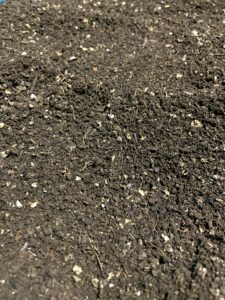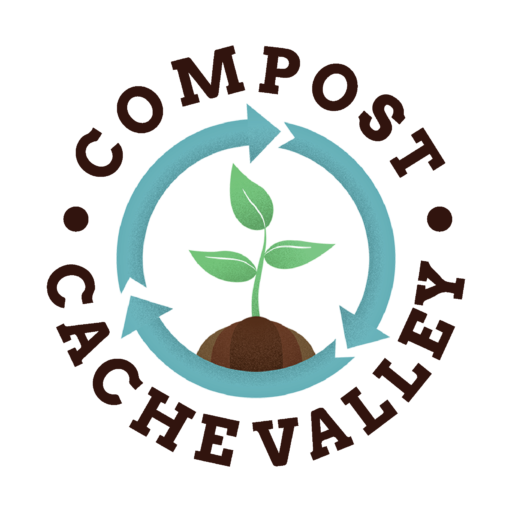It may still be chilly out, but now’s the time to start planning for spring! Whether you are repotting some houseplants, sowing a container garden, revamping your lawn, or planning a home garden, most plants benefit from an early-spring nutrient boost. Compost Cache Valley can help – we have our premium compost and our premium earthworm castings for sale now!
But what’s the difference between compost and castings and how do you use them?
Compost is organic material (in our case, food scraps, leaves, and brown paper or cardboard) that has been broken down by microbes into a nutrient-rich soil amendment. Nutrients in compost release slowly over time, so they are less likely to be lost via leaching. Mixing compost into soil also increases the amount of water the soil can hold, which is really beneficial in dry climates like Cache Valley!
We recommend incorporating compost when repotting or when you prep your garden to plant! For container-grown plants (indoor or outdoor), mix 1 part compost to 3 parts potting soil. For garden soil, mix around 1 inch of compost into the top 2-3 inches of soil before planting. Plan to incorporate your compost about two weeks prior to planting seeds or transplanting starts. This helps ensure a timely release of nutrients for your veggies and flowers! You can also broadcast a thin layer of dry compost into your lawn!
Earthworm castings are essentially earthworm manure. We exclusively feed our earthworms our premium compost. This ensures a uniform product that’s ready for your use! Generally, earthworm castings have more concentrated nutrients than compost, so you can use less.
Castings are great for adding nutrients after planting! Topdress houseplants with 1/2 inch of castings 1-2 times per year. You can also add a thin layer of castings around the base of garden plants for a mid-season nutrient boost.
Looking for more details about how to develop a nutrient management plan for your flower beds, veggie patch, or lawn? see USU Extension’s “Sustainable Manure and Compost Application: Garden and Micro Farm Guidelines.” Specifically, use “Plant-Based” compost values in Table 2 on Page 5.
Or if you want us to develop a nutrient management plan for you, Contact Us for more details!
